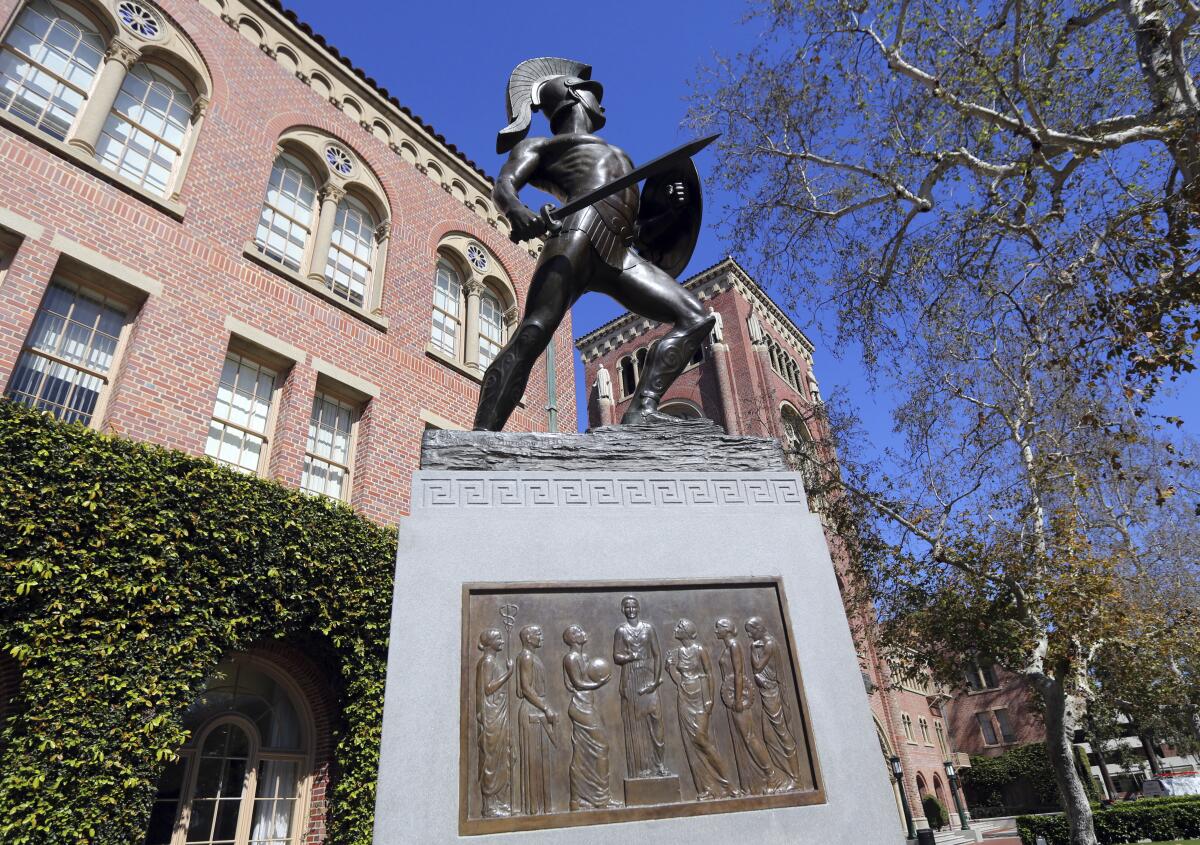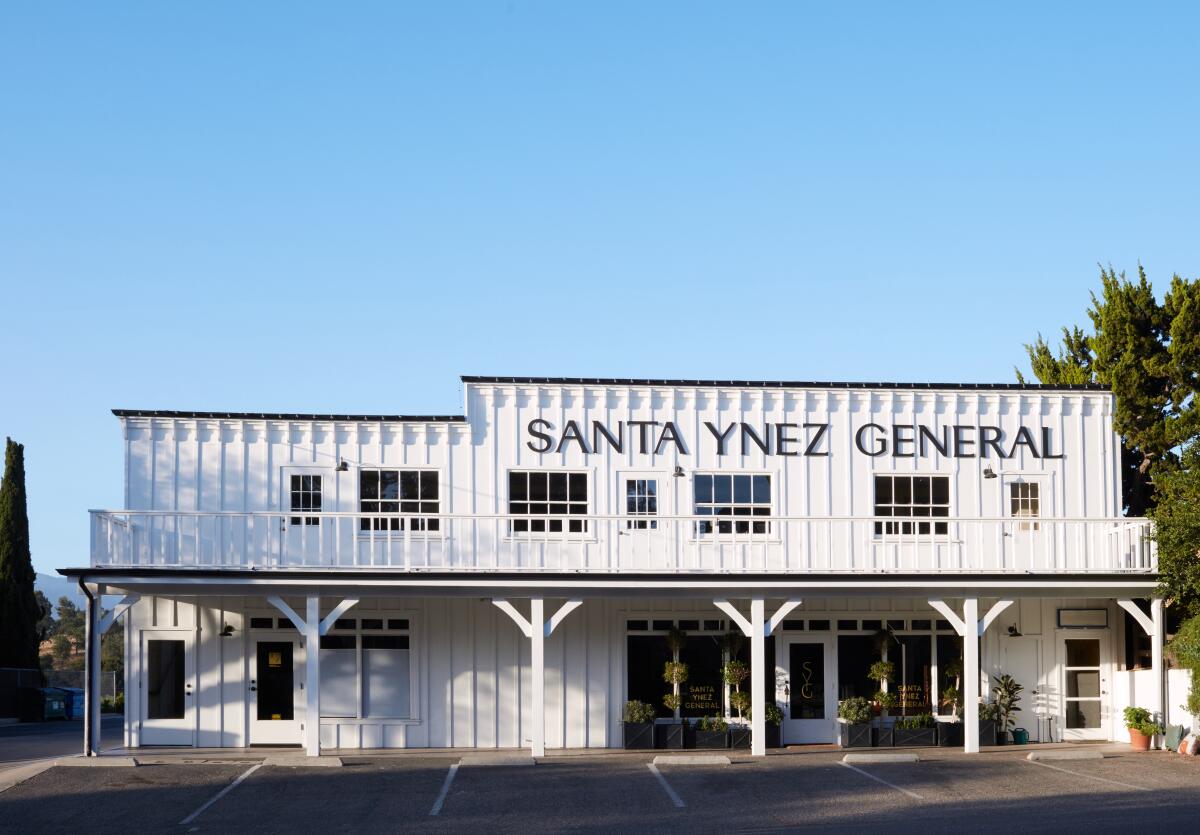Good morning. Here’s what you need to know to start your day.
The latest on the VA’s West L.A. campus housing saga
There’s fairly broad consensus that reducing California’s nation-leading homelessness won’t happen without dramatically increasing affordable housing.
But getting those units built remains an uphill battle — including for the U.S. Department of Veterans Affairs.
Look no further than the VA’s West Los Angeles campus, which has become an example of the bureaucracy that critics say is delaying much needed housing for veterans who have been promised care and need it the most.
Building more housing to combat veteran homelessness has been a contentious issue for decades. But a recent ruling by U.S. District Court Judge David O. Carter aims to require the VA to finally follow through.
And last week, Carter gave the VA a hard and fast deadline to start building modular housing on what’s now a parking lot for UCLA’s Jackie Robinson baseball stadium. The judge has put the pressure on the VA and its leaseholders to figure out how to get housing built on the crowded campus.
Central to that is his ruling that the 10 acres the VA leases for UCLA’s ballpark and 22 acres leased to Brentwood School’s athletic facility are a misuse of land meant to serve veterans first and foremost.

U.S. District Judge David O. Carter has nullified UCLA’s lease to the veterans land and ordered the parking lot of Jackie Robinson Stadium to be used for temporary housing.
(Gensler)
His ruling also came with an ambitious order for the VA: Build more than 2,500 housing units for low-income veterans — and fast (by VA standards).
Times senior writer Doug Smith has been reporting on the saga for years.
“The order is Carter’s opening gambit — in the judge’s words, an ‘icebreaker’ to cut through bureaucratic malaise — toward an ambitious goal,” Doug wrote. “He’s ordered the VA to create up to 750 units of temporary housing in 18 months … and an additional 1,800 permanent units over six years.”
How’d we get here?
Carter’s order came nearly two years after a lawsuit accused the VA of discriminating against veterans with disabilities who were seeking housing. It also challenged leases the West L.A. campus entered into with UCLA, a private school and a company operating a parking lot.
The basic argument from advocates: The VA has a fiduciary duty to help veterans, including those experiencing homelessness and disabilities, and leasing portions of the campus for purposes that don’t primarily serve veterans is illegal.
Judge Carter agreed. He ruled in July that the VA’s outsourcing of housing construction “facially discriminates against veterans based on their disabilities.” Then in September, he ruled that the VA’s leases to UCLA, Brentwood School and others on the West L.A. campus are illegal because they don’t principally serve veterans.
“Over the past five decades, the West LA VA has been infected by bribery, corruption, and the influence of the powerful and their lobbyists, and enabled by a major educational institution in excluding veterans’ input about their own lands,” Carter wrote in his 124-page decision.
UCLA and at least one other leaseholder have appealed Carter’s ruling. It’s unclear whether the VA, via the U.S. Justice Department, will do the same.
“Unless the 9th Circuit reverses me, this is veterans’ land,” Carter said during a hearing last month.
To some, Carter has become “L.A.’s accidental homelessness czar,” Doug wrote back in May, explaining that the judge has used his gavel to act on “his conviction that homelessness is a moral outrage.”

U.S. District Judge David O. Carter, second from left, confers with his law clerks while touring Jackie Robinson Stadium in West Los Angeles on Aug. 21, 2024.
(Brian van der Brug / Los Angeles Times)
On top of his decisions on the VA’s housing commitments, Carter also ordered the city of L.A. to pay up to $2.2 million for an outside audit of its homelessness programs to understand how the city is spending those funds.
This isn’t the first time the VA has been sued over veterans housing.
Doug noted that the department agreed to build 1,200 units of housing on the campus back in 2015 as part of a settlement to a 2011 lawsuit.
That included “a commitment to complete more than 770 units by the end of 2022,” Doug wrote. “Only 54 of those units were completed by the deadline, and by September 2023, only 233 were available.”
Data show a third of the nation’s unhoused veterans are in California. The number of veterans affected by homelessness has declined over the last 12 years, both in the state and nationally .
According to the U.S. Department of Housing and Urban Development, veteran homelessness fell by nearly 37% in California from 2011 to 2023. The number of unhoused veterans dipped the most from 2011 to 2016 and has mostly plateaued since then.
Los Angeles County reported veteran homelessness dropped almost 23% in its 2024 point-in-time count compared with last year’s count.
For veterans homelessness, there “has generally been a lot of resources and a lot of political will,” Beth Sandor, who leads the Built for Zero program at the nonprofit Community Solutions, previously told me. “Often the challenge around ending veteran homelessness is less on the resource side and more on the coordination and implementation side.”
Today’s top stories

The Tommy Trojan statue on the campus of the University of Southern California.
(Reed Saxon/AP)
In pursuit of donations, USC admitted affluent kids as walk-on athletes
- USC quietly offered wealthy and well-connected families an alternative path to admission with much lower academic expectations and an acceptance rate of 85% to 90%, a Times investigation found.
- When the Varsity Blues scandal threatened to expose the secret system, the university and some employees involved took steps to keep the details hidden.
Election Day is two weeks away
- In the Los Angeles County D.A.’s race, Nathan Hochman and his allies have raised significantly more money than incumbent George Gascón and groups supporting him, a Times analysis found.
- Latino voters could decide who wins some of California’s most competitive congressional races — and which party controls Congress next year.
- Two congressional district races in Southern California are vying for a key voting bloc — Asians.
- San Francisco Mayor London Breed, facing a tough reelection, says she’s what the city needs.
Infant deaths increased in the U.S. after the Supreme Court overturned Roe vs. Wade
- The infant mortality rate involving babies born with serious congenital anomalies jumped just months after the Supreme Court’s ruling, researchers found.
- Infant mortality rates returned to a normal range a year after the 2022 ruling, which may suggest fewer people were willing to become pregnant in response to the newly restrictive landscape.
Latino residents slam “trust fund hipsters” in an increasingly personal battle over gentrification in L.A.
- Long-simmering tensions exploded this fall in the Elysian Valley, where a vocal group of residents pushed out a trendy flea market.
- Many residents said the market became a symbol of the economic forces that are gradually erasing the tight-knit community they grew up in.
What else is going on
Get unlimited access to the Los Angeles Times. Subscribe here.
- Here’s why the race between Donald Trump and Kamala Harris looks so impossibly close, columnist Jonah Goldberg explains.
- Sorry, Trump. Americans know how a “real man” should act, columnist LZ Granderson writes.
- President Vance? Brace yourself for it. Trump is already deteriorating, author Jill Lawrence writes.
- The risks of sharing your DNA with online companies are now here, writes Nila Bala, a law professor at UC Davis.
This morning’s must read

(Prince Williams / FilmMagic/Getty Images)
How Sean “Diddy” Combs allegedly used his empire and employees to “get his way” with women. The music mogul’s alleged sexual mistreatment of women was aided and abetted by a complex and vast network of enablers, according to a Times review of court filings and interviews with current and former business associates.
How can we make this newsletter more useful? Send comments to essentialcalifornia@latimes.com.
For your downtime

The Santa Ynez General is one of several places to check out in Santa Ynez.
(Santa Ynez General)
Going out
- 🍷 Homey yet sophisticated, Santa Ynez is the rural paradise you’ve never heard of.
- 🏋️ Strength training may be the key to longevity. Here’s a look at how to do it safely as you age.
- 👻 Wish Halloween was every day? Here are 13 places in L.A. that have spooky vibes any time of the year.
- 🎭 REDCAT presents the West Coast premiere of the Wooster Group’s production of Richard Foreman’s “Symphony of Rats.”
Staying in
A question for you: What’s something that recently made you smile?
AD writes: “A video of Tico and the Man, a musical duo. Tico is a parrot that sings with gusto as Frank, his man, plays excellent guitar. … One of the many videos of Tico is Frank and a friend playing ‘Surfin’ Bird’ — that goofy party song from the 60s. I cannot stop laughing at the silliness of this parrot trying to sing along with it.”
Feel free to email us at essentialcalifornia@latimes.com, and your response might be included in the newsletter this week.
And finally … your photo of the day
Show us your favorite place in California! Send us photos you have taken of spots in California that are special — natural or human-made — and tell us why they’re important to you.
Today’s photo is from Lisa Patterson of Big Bear Lake: the northern lights as seen in California. A severe geomagnetic storm made the aurora borealis visible in parts of the state earlier this month.
Lisa writes: “My first time ‘seeing’ the northern lights was just a few blocks from my home on the shore of Big Bear Lake. It wasn’t really visible to the naked eye, but my cell phone captured it in night mode. It intensified how grateful I am to the firefighters from all over the world who came to save our beautiful home in Big Bear Valley from the Line Fire.”
Have a great day, from the Essential California team
Ryan Fonseca, reporter
Defne Karabatur, fellow
Andrew Campa, Sunday reporter
Hunter Clauss, multiplatform editor
Christian Orozco, assistant editor
Stephanie Chavez, deputy metro editor
Karim Doumar, head of newsletters
Check our top stories, topics and the latest articles on latimes.com.
